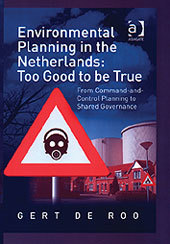Environmental Planning in the Netherlands: Too Good to be True From Command-and-Control Planning to Shared Governance Urban Planning and Environment Series
Auteur : Roo Gert de

Date de parution : 11-2003
15.3x21.9 cm
Date de parution : 11-2016
15.2x22.9 cm
Thèmes d’Environmental Planning in the Netherlands: Too Good to... :
Mots-clés :
Integral Environmental Zoning; spatial; Spatial Conflicts; conflicts; Soil Contamination; integral; National Environmental Policy Plan; zoning; Environmental Issues; compact; Area Specific Approach; city; Noise Abatement Act; national; Spatial Planning; policy; Odour Nuisance; quality; Gemeente Amsterdam; grey; Noise Nuisance; Spatial Planning Policy; Bubble Concept; Environmental Zoning; National Spatial Planning Agency; Policy Issue; Human Living Environment; VROM 1984b; Grey Environment; Planning Theory Discourse; Noise Abatement Policy; Compact Urban Development; Compact City; De Roo; VINEX Locations



